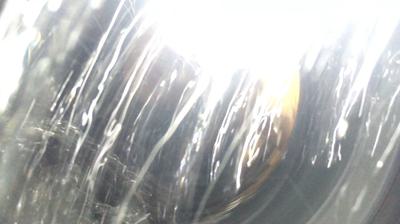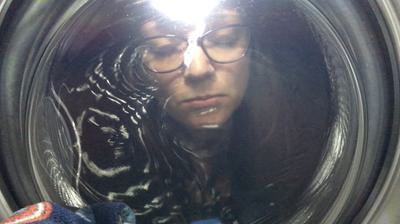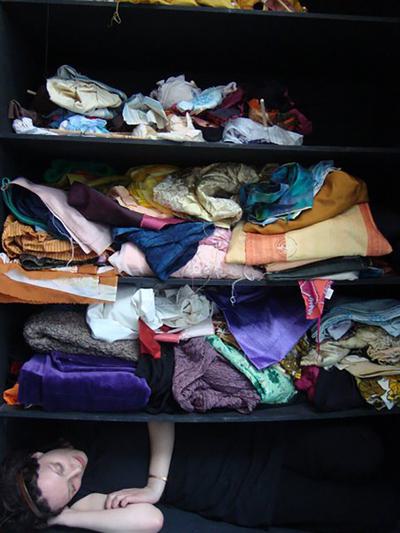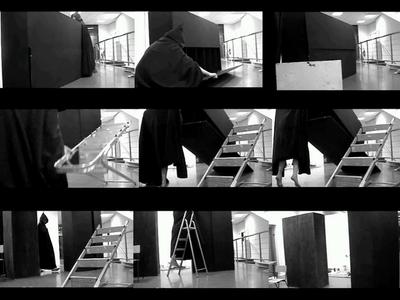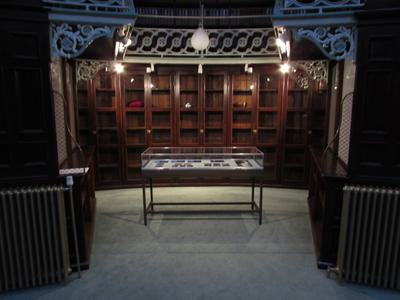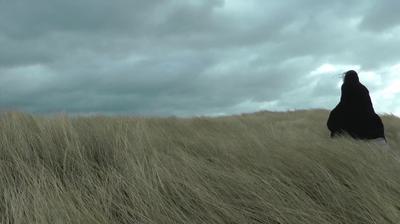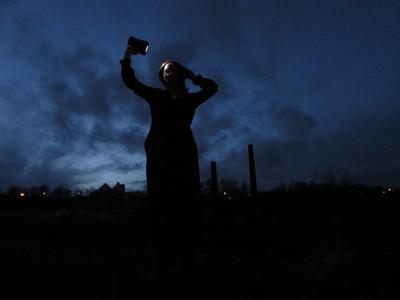Adele Vye
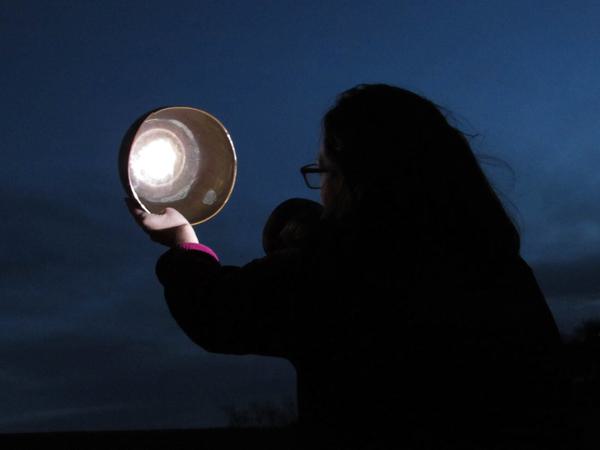
Adele Vye’s video work captures moments during her daily routines as an artist and mother. [...] However, at the same time her work reveals a deeper, internal dialogue, – fear, responsibility, guilt, how to deal with the climate crisis, what to do to protect your kids, how to make work, how to effect change and still hold everything together at home. The boundaries between real and imagined are dissolving in her often dream-like work. As always in her practice, there is humour too as the washing machine becomes a swirling portal to another world, a cataclysmic tornado ripping down houses and communities, causing the world to collapse in on itself.
Karen Mackinnon, Exhibitions Curator, Glynn Vivian Art Gallery, extract from Household Name exhibition catalogue, 2020
...Adele Vye, (is) absorbed in the intrigue and concerns of nature... Her practice is one of contemplative protest, and the viewer is invited to observe her 'intuitive explorations'. Vye's method leans towards the performative. That is, she will often put herself literally and physically in the work, engaging, as it were, her body and its effects as material. A good deal of Vye's work can be immediate in response to a given issue, utilising her body in a series of gestures. These expressions are documented via a photograph or video. But these are also offset by working with organic materials, recently fleece, for instance. Anything and everything has potential, as she states: 'Material to me can be anything, from a thought or a notion to a thing, a being or a place'... (Adele's) work is concerned with why things are the way they are, and prompts a timely reflection and reassessment of the familiar.
Tim Davies, Artist and Curator, March 2010
Vye's work might appear humorous and tragic on the surface, but the use of cloaks and other 'instruments' demonstrate a practice which references mythology, environmental issues and the summoning of energy.
Owen Griffiths for Oriel Davies Gallery, Newtown, February 2010
My work aims to make images which ask timely questions. I am drawn to industry, myth and nature. My fascination with the contrasting ideas of the domestic and public, urban and rural, magic and mundane are frequently at play. A work is often initiated by a problem which has arisen in my creative process, which then allows a need to emerge.
The documentation of an action becomes the work. I record what happens sometimes through photographs, but mostly on video. The films usually take the format of single take, unedited documentation, shot from one perspective.
My work tends to be site specific, as well as taking time of day or atmospheric conditions to be intrinsic to the context. I often work at night being drawn to transitional and liminal spaces, also things in flux or transforming. Changing climate, and our relationship and impact upon the environment, are recurring themes and cut through my work consistently. There is frequently a discourse between the physical act and some element which is invisible or unseen.
In my broader practice I create or happen upon objects, tools and materials which become utilised and instrumental in the actions. I am interested in their potential as 'Instruments' and their imbued and implied properties. These include cloaks made from old wool blankets, sheeps fleece and felt, copper bowls, shopping trollies, a dressing gown and an old hoover.
Most recently my concerns have turned to the changing weather in a new series of works entitled ‘attempts above and below sea level’, which along with other levels of reference was a response to the feeling of being underwater even when on land.
Previous Works
In The Steel Works Series we witness the felt cloaked artist in 'dialogue' with the South Wales Port Talbot Steel Plant where she partakes in a series of solitary actions, where we observe the artist wail, scream and fall in and around the site
In the award winning On Wasting Energy the artist plugs a vacuum cleaner into the ground and attempts to Hoover the cleared land above the LNG gas pipeline running through Wales
In the award winning Nightshift: movements 1-8 the corridors and hallways of an educational institution are the setting for the nocturnal search for ones place, where by the artist becomes a living myth by struggling to push, manoeuvre and shift a large black cupboard around the university building at night where and in which she had slept shrouded in rumour for just over 1 year.
Helping Artists Keep Going
Axis is an artist-led charity supporting contemporary visual artists with resources, connection, and visibility.
